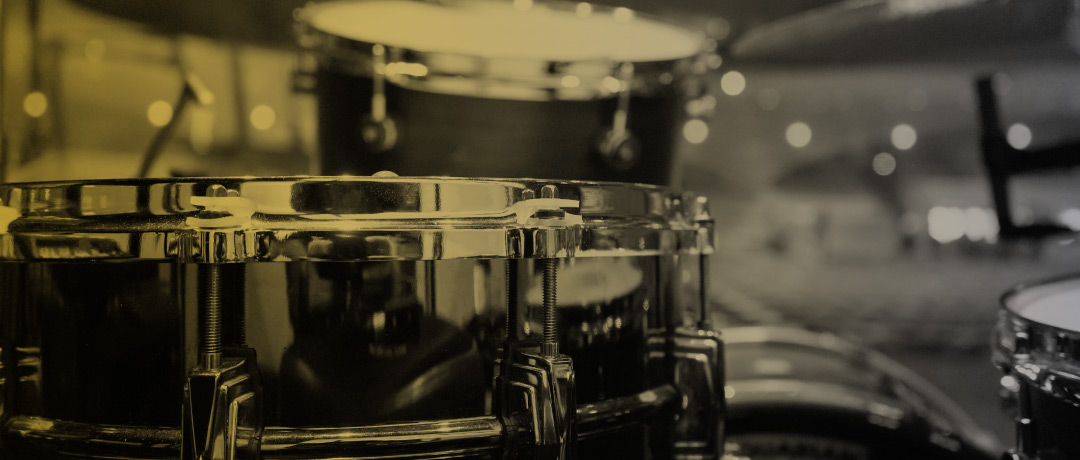Blog | What is the Fundamental Pitch of a Snare Drum?

What is the Fundamental Pitch of a Snare Drum?
Snare drums receive the most amount of attention out of any piece of a standard drum kit when it comes to mixing – and for good reason. Snare drums are the backbone of the groove in any song, and in church worship music they are especially important. Not only does the snare serve as a “timing landmark” for a song or groove – giving structure to the pocket and rhythm section – it also provides a TON of energy to the music.
All that being said, the “pleasantness” and energy that come from a snare can only be there if it is properly mixed and tuned, and much of that depends of each individual snare’s fundamental note.
Snare Drum Tuning: What is the Fundamental?
There’s a few ways to describe what the fundamental pitch of a snare drum is, but the easiest is that it’s simply the loudest part of the snare drum. If you’re EQ frequency-sweeping, you’ll notice a massive boost in volume around the 100Hz-250Hz zone accompanied by an almost “gung” like sound. If you find the specific frequency zone that’s loudest, you’ve found the “fundamental” of the snare drum.
Where the Fundamental Comes From, and How to Change it
The fundamental of a snare drum can also be thought of as the snare drum’s “note”.
Unlike a string on a guitar or a key on a piano, striking a drum produces a whole mess of frequencies and it’s often difficult to distinguish what “note” a particular drum is producing. However, when it comes to snares, if the drum is in tune with itself (i.e., lightly striking 1 inch from each lug produces the same pitch), you should here a predominant note resonating from the drum. That note is the fundamental, or otherwise known as the fundamental pitch.
The fundamental pitch is the pitch that results from the resonation of both the snare’s top and bottom head. If you were to put your hand on the bottom head to mute it while striking the top head (and vice versa), you would notice that the individual pitch of each head is different than the fundamental pitch produced by both heads resonating together. That is where the fundamental pitch comes from. Changing the tuning of either head (usually the top/batter head) will change the fundamental pitch.
EQing and Mixing the Snare Drum’s Fundamental: Tips
Unfortunately, a lot of people don’t know what to do with the fundamental of a snare drum. Do you pull it down to keep it from getting overwhelming? Push it for more energy and volume? Every snare is going to be different, and each room has its own specific sound and mixing needs, but there are a few universal mixing principles when dealing with snare drum’s fundamental pitch. Here they are!
1) Boost or Cut the Fundamental?
Let’s try to think of the fundamental region and the fundamental pitch differently. The fundamental region is just that loud section of the drum somewhere between 100Hz and 250Hz. Yours may occupy most of that region or a very small section. Figure out where it starts and ends. That is the fundamental region.
The fundamental pitch, on the other-hand, can be thought of as the loud, low-pitched “ringy” sound of the snare; the ‘hum’ that you hear extend 1-2 seconds beyond the striking of the snare drum. If you take a sharp Q when frequency-sweeping, move your way through the fundamental region until you find that one specific “note” or “hum” – that is the fundamental pitch / note.
A great way to get energy and body out of a snare without it overpowering the speakers with nasty ringing is to take a wide-Q and boost the fundamental region, followed by another EQ with a sharp Q that does a surgical cut right on the fundamental pitch. This boosts the body of the snare drum will taking out the annoying ring.
2) Eliminating Ring from the Fundamental
The ring in a snare drum can often bring a unique kind of energy to a song. If it’s left open and happens to be tuned to the song’s root or 5th, there’s actually a ton of power that comes from an open, ringing snare. However, in most circumstances you’re not afforded the luxury of tuning your snare drum to the song. In that instance, you need to muffle the snare drum. There are a ton of different types of muffling, and while all help with ring-control, each has its own unique effect on the snare drum. These are a couple of our favorites:
a) Moongels:
If you’re a drummer, chances are you always have a couple packs of Moongels in your cymbal bag or backpack. Moongels pretty much just help with snare ring-control. They don’t mess too much with the tonality or pitch of the drum unless you use an excessive amount (over 3). To make micro-adjustments to the amount of ringing present in a snare, nudge Moongels close to the center of the drum. If you’re ~1.5 inches in and it’s still ringing too much, place a 2nd Moongel on the drum 90 degrees from the center relative to the other Moongel (NOT directly across from the first Moongel). This allows for the maximum amount of ring control.
b) Newspapers:
This is actually an age-old recording studio trick. Adding roughly 3 sheets of newspaper to a snare drum fattens up the fundamental region of a snare while eliminating the ring. Keep in mind that newspapers also lower the fundamental pitch of a snare, and if the snare is already super loose, it can be very difficult to play snare rolls and other intricate patterns. If you’re going the newspaper route, you can always tune the snare up a little more without sacrificing the body of the snare.
c) Big Fat Snare Drum Muffle:
These things are awesome. The company ‘Big Fat Snare Drum’ makes these plastic circles that are laid on top of a snare drum to produce a similar effect to that of newspaper. However, unlike newspaper, you don’t have to deal with shredded pieces of paper getting everywhere. No, we’re not sponsored by them or plugging their products – Chris (our marketing guy) just really loves these things. They’re great.

About the Author
Chris Fleming is a professional musician from Minneapolis, MN who has played with artists such as Kari Jobe, TAYA, Aodhan King, and Jason Gray. He is actively involved with the CCM scene and has contributed as a drummer, music director, song writer, and producer for various worship artists and churches locally and nationally. Chris is the Motion Designer at Motion Worship, helping to create motion background collections and countdowns for our subscribers.
